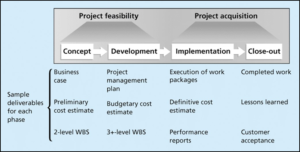The literary world is filled with fascinating stories, not just within the pages of books but also behind their creation. Today, we delve into an insightful conversation with [Author Name], a celebrated writer whose latest book has garnered much acclaim. In this interview, [Author Name] shares the journey from the initial concept of their book to its publication, offering a glimpse into the creative and practical aspects of bringing a book to life.
Figure 1: [Author Name], the visionary behind [Book Title].
The Concept Phase

Q: How did the idea for your latest book come about?
[Author Name]: The idea for [Book Title] came to me quite unexpectedly. I was inspired by a combination of personal experiences and a historical event that had always intrigued me. I started jotting down notes and soon realized that this was a story worth exploring in depth. The concept evolved over time, as I added layers to the narrative and developed the characters further.
Q: What steps do you take to develop an initial concept into a full-fledged story?
[Author Name]: I begin with extensive brainstorming and research. I create mind maps to connect different ideas and themes. Once I have a clear vision, I start outlining the main plot points and character arcs. This helps me see the bigger picture and ensures that the story has a strong foundation. I also keep a journal where I jot down random ideas and inspirations that come to me during this phase.
Figure 2: [Author Name]’s brainstorming notes for [Book Title].
Writing and Drafting
Q: Can you describe your writing process?
[Author Name]: My writing process is quite structured. I allocate specific hours each day to writing and try to stick to this schedule as much as possible. I start by reviewing my notes and outline, then dive into writing. I write the first draft without worrying too much about perfection; the goal is to get the story down on paper. Once the first draft is complete, I take a short break before revising and editing.
Q: How do you overcome writer’s block?
[Author Name]: Writer’s block can be challenging, but I’ve developed a few strategies to overcome it. Taking a walk or changing my environment often helps clear my mind. I also find it helpful to work on a different section of the book or write something entirely different, like a short story or a poem. Sometimes, discussing my ideas with fellow writers or friends can spark new inspiration.
Figure 3: [Author Name]’s writing desk, where creativity flows.
Editing and Revising
Q: What is your approach to editing your manuscript?
[Author Name]: Editing is a crucial part of the writing process. After completing the first draft, I let it sit for a few days before revisiting it with fresh eyes. I go through multiple rounds of revisions, focusing on different aspects each time, such as plot consistency, character development, and pacing. I also work closely with beta readers and my editor, whose feedback is invaluable in refining the manuscript.
Q: How do you handle constructive criticism during the editing process?
[Author Name]: Constructive criticism is essential for growth, though it can be difficult to hear at times. I try to approach feedback with an open mind and see it as an opportunity to improve the story. Not all feedback will resonate, but it’s important to consider each suggestion carefully and determine how it can enhance the book.
Figure 4: Detailed editing notes for [Book Title].
The Path to Publication
Q: What was the most challenging part of getting your book published?
[Author Name]: The most challenging part was finding the right publisher who believed in my vision for the book. The submission process can be lengthy and filled with rejections, which can be disheartening. However, persistence is key. Once I found a publisher who understood and supported my work, everything started to fall into place.
Q: Can you share some insights into the publication process?
[Author Name]: The publication process involves several stages. After the manuscript is finalized, it goes through copyediting and proofreading to ensure there are no errors. The next step is designing the cover and layout, which is an exciting part of bringing the book to life visually. Marketing and promotion are also crucial to reach a wider audience. Working with a good team makes this process smoother and more enjoyable.
Figure 5: The design process for [Book Title]’s cover.
Launch and Reception

Q: How did you feel when your book was finally published?
[Author Name]: Seeing my book in print was a surreal and gratifying experience. It’s the culmination of months, sometimes years, of hard work and dedication. Holding the finished product in my hands and knowing that readers would soon be diving into the story was incredibly fulfilling.
Q: What has the reception to your book been like?
[Author Name]: The reception has been overwhelmingly positive. Readers have connected with the characters and themes in ways I hadn’t even anticipated. The feedback and reviews have been encouraging, and it’s been wonderful to see discussions and book clubs centered around [Book Title]. It’s also opened up opportunities for speaking engagements and events, which has been a great way to connect with my audience.
Figure 6: [Author Name] at a book signing event, meeting readers.
Looking Forward
Q: Are there any future projects you are working on?
[Author Name]: Yes, I’m currently working on a new novel that explores different themes and characters. It’s still in the early stages, but I’m excited about where it’s heading. Additionally, I’m considering a sequel to [Book Title], as there are still many aspects of the story I’d like to explore further.
Q: What advice would you give to aspiring writers?
[Author Name]: My advice to aspiring writers is to stay persistent and believe in your story. Writing can be a solitary and challenging journey, but it’s important to stay motivated and keep honing your craft. Don’t be afraid of rejection; every “no” brings you closer to a “yes.” Surround yourself with supportive people who encourage your passion, and most importantly, write what you love.
Figure 7: [Author Name] speaking at a literary event, sharing insights and experiences.
Conclusion

The journey from concept to publication is a testament to [Author Name]’s dedication, creativity, and resilience. Through this interview, we gain valuable insights into the meticulous process of bringing a book to life and the passion that drives a writer’s work. As [Author Name] continues to create compelling stories, we eagerly anticipate their future projects and the impact they will have on readers around the world.
Where to Buy
- [Book Title] is available at major bookstores and online retailers. Dive into the world created by [Author Name] and experience the magic of their storytelling.
Tips for Readers
- Join a Book Club: Discussing the book with others can deepen your understanding and appreciation of the story.
- Attend Author Events: Meeting authors and hearing them speak about their work can provide unique insights and enhance your reading experience.
- Leave Reviews: Sharing your thoughts about the book online helps other readers discover great reads and supports the autho



